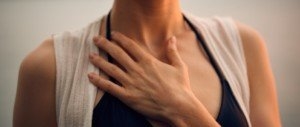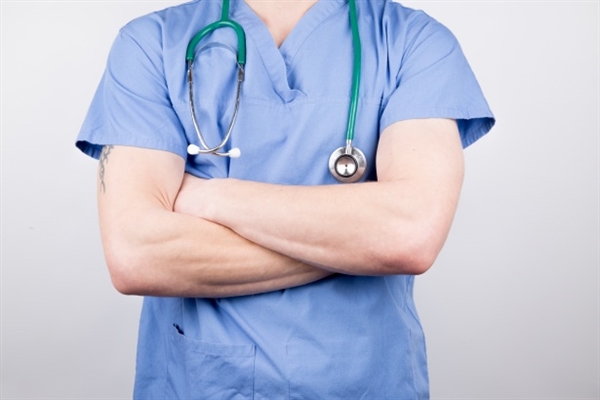Cardialgia (pain in the heart) bother both men and women, however, they observe a certain tendency to an increased frequency in women, which is associated with the influence of sex hormones and greater emotional lability.
Physiological features of the female body
Women have a number of physiological featuresthat distinguishes them from men.
- The first smaller heart size, myocardial thickness, systolic and minute blood volumes (IOC), diastole duration. The increase in IOC in response to physical activity occurs mainly due to an increase in heart rate. This mechanism is uneconomical and with less functional capabilities of the heart.
- Increased elasticity and extensibility of the ligaments, which leads to frequent trauma.
- Higher excitability and reactivity of the nervous system, manifested by pronounced emotionality.
- Menstrual cycle, pregnancy, menopause - all these features change the level of estrogen and progesterone, which entails lability of mood, sleep, basal metabolism, metabolism of catecholamines.
Common causes
- Coronary artery disease (true cardialgia) - the type of pain associated with organic pathology of the cardiovascular system, namely, coronary arteries. With their atherosclerosis, spasm, the heart receives an insufficient amount of oxygen with the blood, as a result of which the appearance of ischemic disease is observed.
- Non-coronary - a category of pain not associated with impaired blood flow through the coronary vessels. The reasons are heart rhythm failures, psychoneurotic conditions, exacerbation of concomitant chronic diseases. Below is a photo with the typical localization of points of pain in the heart in women.

True cardialgia
The reasons for true cardialgia are the following factors:
- Stable exertional angina. It implies the appearance of pain behind the sternum of a pressing, compressive nature, which is associated with physical exertion or stressful situations. It lasts no more than 15 minutes, it is well controlled by taking "Nitroglycerin".
- Coronary syndrome. Retrosternal pain attacks are often more intense, react worse to "Nitroglycerin". The peculiarity of this pathology is that the coronary vessels are not involved in the development of the disease, and the diagnosis is made by the method of exclusion.
- Prinzmetal angina (vasospastic)... An anginal attack occurs more often in the morning or at night.
- Unstable angina - a complex of symptoms that have arisen for the first time (the last two months) or aggravation of the manifestations of an already existing angina pectoris (pain bothers more often and with less exertion, sometimes even at rest, while the sensitivity to nitrate drugs decreases).
- Myocardial infarction - a dangerous condition that threatens human life. Typical features: sharp paroxysmal chest pain of a burning, tearing character with possible irradiation to the left arm, shoulder blade, leg, elbows. The attack lasts more than 15 minutes and is not removed with nitro drugs. It is accompanied by severe shortness of breath, sweating, general weakness, and frequent heartbeat.
- Aortic dissecting aneurysm... Chest pain occurs unexpectedly, at the time of physical activity, the rise in blood pressure, radiates to the spine, upper limbs, head. Signs of shock are observed with a transition to a state of imaginary well-being, when the pain subsides, blood pressure and heart rate stabilize. Migration of pain is characteristic: first it is localized in the region of the heart, then in the epigastrium, lower back, lower limb.
- Pulmonary embolism... The attack occurs acutely, while the patient suffocates, the skin acquires a bluish tint due to severe suffocation, the heartbeat increases; hemoptysis subsequently appears.
- Dry pericarditis manifested by prolonged pain in the heart, shortness of breath, fever.
Extra-cardiac sources of pain
- Cervical and thoracic osteochondrosis, spondylosis. The pain of a stabbing, sometimes shooting character, increases gradually and lasts for days, increases at night, decreases when walking, running, taking NSAIDs. A special feature is a direct connection with body movements - turning, abducting and raising the arms. It intensifies when inhaling and touching the problem point. Often accompanied by cephalalgia, dizziness.
- Intercostal neuralgia... The pain is sharp, burning, arises along the rib.
- Left-sided plexitis - inflammation of the brachial nerve bundle, which is accompanied by severe pain, numbness in the left arm. The sensations intensify with the movements of the affected limb.
- Tietze Syndrome - aseptic inflammation of the cartilage II, III, IV, V ribs in the place of their attachment to the sternum. Pain in the heart region bothers for a long time, supplemented by an increase in body temperature, swelling to the left of the sternum, severe paresthesia, laboratory signs of inflammation.
- Herpes zoster... It is accompanied by a painful rash in the form of redness of the skin with grouped vesicles filled with a clear liquid. Occurs along the intercostal space.
- Pleurisy (basal left-sided). Stitching pain, occurs suddenly, increases with breathing, accompanied by signs of inflammation. The noise of friction of the pleura is heard during auscultation of the lungs.
- Diaphragmatic hernia - displacement of the abdominal organs (stomach, intestines) into the chest through a diaphragm defect. In this case, there is a syndrome of "acute mediastinum" with intense pain in the heart, frequent palpitations, a drop in pressure, pallor and other signs of shock.
- Diverticulum of the esophagus... Chest pain appears after eating, when swallowing, bending the body forward.
- Gastroesophageal reflux disease (GERD) also a common reason for going to the doctor with a complaint of chest pain, which is burning in nature and is accompanied by heartburn, a feeling of acid in the mouth.
- Climacteric cardialgia... Due to the restructuring of the hormonal background, a woman is worried about a very intense pain in the heart of a cutting, stabbing, pressing character, not associated with physical activity, which has a wave-like course. There are flushes of blood to the head, a feeling of heat of the face, increased sweating, frequent urination, irritability. At the same time, cardialgia does not have organic soil and is not accompanied by changes in the cardiogram.
Let us also mention climacteric myocardial dystrophy, in which a decrease in estrogen levels provokes the development of organic pathology of the heart.
- At pregnancy changes in hormonal levels and fetal development create an increased load on the woman's cardiovascular system, which causes cardialgia, arrhythmias and arterial hypertension.
- Thyrotoxicosis and other thyroid disorders... In addition to nonspecific pain in the region of the heart, tachycardia, arrhythmia (often atrial fibrillation), irritability, tremors, drowsiness, apathy, and low blood pressure are alarming.
- Cardioneurosis - functional disorder, which is considered as a complex of mental, autonomic and endocrine pathologies. The symptom of pain in the heart in young women is inherent in emotionally labile individuals. The pain does not have any cause, it is different in sensations and is well controlled by sedatives.
Cardiophobia accompanied by discomfort in the region of the heart, alertness, fear of death. Severe cardiophobic syndrome is considered a pseudoinfarction attack, in which pain occurs as a result of waiting for the diagnosis of myocardial infarction. Fear accompanies pain, and a vicious circle is obtained.
How to make a diagnosis
If a girl or woman has a heartache, on the list of priority studies:
- Detailed collection of anamnesis and familiarization with the patient's outpatient record... The doctor specifies the location, nature, duration of pain, other symptoms, medication. Collect information about past infectious diseases, toxic effects (occupational and household, radiation).
- Then examining the patient (skin color, blood pressure, respiratory rate, pulse rate, heart and lungs are auscultated).
- Laboratory research (general and biochemical blood tests), which help determine some non-cardiac causes of pain.
Instrumental diagnostic methods:
- ECG - a highly informative and accessible research method that helps to quickly determine cardiac pathology. If a heart attack is suspected, a blood test is performed for the content of troponin T or I - specific markers of myocardial necrosis;
- echocardiography (helps to assess the structure and functional ability of the heart);
- veloergometry (defines ischemic heart disease);
- Holter ECG monitoring;
- load tests;
- coronary angiography - the gold standard in assessing the patency of coronary vessels;
- multispiral computed tomography and MRI of the heart.
If the organic pathology of the cardiovascular system is excluded, the diagnostic search includes:
- X-ray and MRI of the spine (if you suspect osteochondrosis, hernia, disc protrusion);
- fibrogastroduodenoscopy (helps to assess the condition of the esophagus, stomach and duodenum);
- determination of the level of hormones - the thyroid gland and sex hormones.
Treatment and follow-up methods for women
The tactics of treating a symptom of heart pain in a woman directly depends on her etiology.
In case of organ diseases, therapy with cardiological drugs is used to normalize blood pressure, dilate blood vessels, reduce cholesterol, and prevent blood clots. In addition, metabolic therapy medications are prescribed: Quercetin, Trimetazidine, L-arginine.
If a woman has an imbalance of the autonomic nervous system, the doctor considers herbal remedy as an option. A good choice is herbal remedies based on hawthorn, valerian, motherwort, passionflower, mint, yarrow, St. John's wort and calendula. Of course, herbal medicine does not always have an effective effect, and it is replaced or supplemented with pharmacological drugs (sedatives, hypnotics, beta-blockers).
Effective methods of treating psychosomatic cardialgia are psychotherapy, normalization of the daily routine, good nutrition, sports. In case of hormonal imbalance, appropriate replacement therapy is performed. With osteochondrosis and other inflammatory diseases of the musculoskeletal system, pain is relieved by NSAIDs, glucocorticosteroids, pain relievers.
Conclusions
Symptoms of heart pain in women are a common reason for visiting a cardiologist. The pain is pressing, burning, squeezing, stabbing, encircling or radiating to the left arm, scapula; causes fear of death and hysterical seizures. Cases of cardialgia require a thorough approach and careful diagnosis, perhaps even hospitalization in a hospital, in order to determine the rational tactics of treatment.



